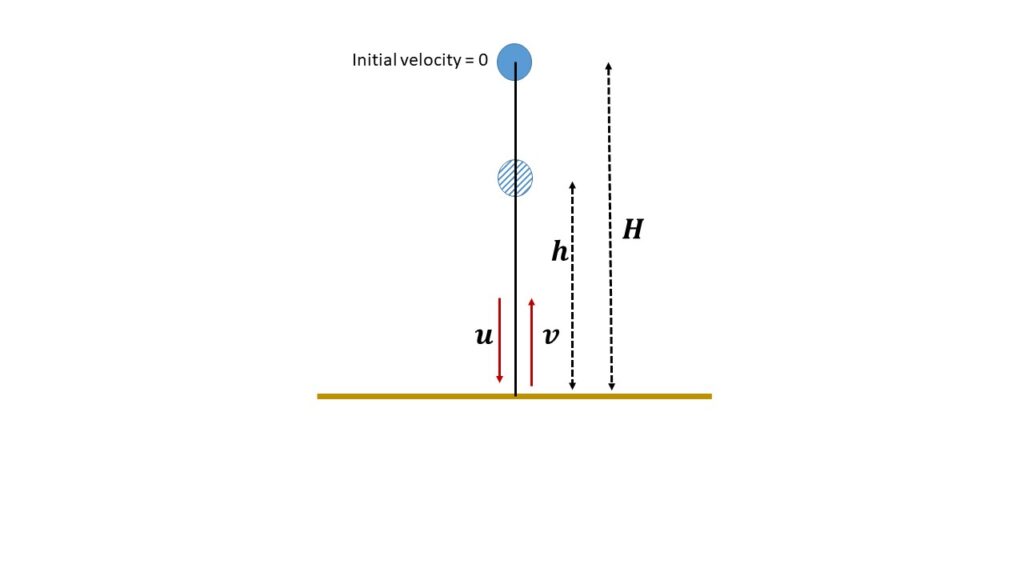Ans.
A particle is dropped vertically on a fixed horizontal plane from a height \( H \) above the plane.
At height \( H \) the particle is at rest, i.e., the initial velocity of the particle is zero.
Let \( u \) be the velocity of the particle just before the collision with the plane and \( v \) be the velocity just after the particle hits the plane, as shown in the Fig. 1.

Therefore, \( u^2=0^2+2gH \)
or, \( u^2=2gH \)
where \( g \) is the acceleration due to gravity.
Let us consider, after 1st collision the particle reach the maximum height \( h \), so at height \( h \) the velocity of the particle will be zero,
therefore, \( 0^2=v^2-2gh \)
or, \( v^2=2gh \)
If \( e \) be the coefficient of restitution,
\( e=\frac{v-0}{u-0} \)
or, \( e=\frac{v}{u} \)
or, \( \displaystyle{e=\sqrt{\frac{2gh}{2gH}}} \)
or, \( \displaystyle{e=\sqrt{\frac{h}{H}}} \)
or, \( h=e^2H \)
Similarly the particle rebounds the height \( h_1=e^2(h)=e^4H \) after second collision with the plane, \( h_2=e^2(h_1)=e^6H \) after 3rd collision with the plane and so on.
So the total theoretical distance covered by the particle before coming to rest is
\( H+2e^2H+2e^4H+2e^6H+\cdots \)= \( (2H+2e^2H+2e^4H+2e^6H+\cdots)-H \)
= \( 2H(1+e^2+e^4+e^6+\cdots)-H \)
= \( \displaystyle{2H\frac{1}{1-e^2}-H} \)
= \( \displaystyle{\frac{2-1+e^2}{1-e^2}H} \)
= \( \displaystyle{\frac{1+e^2}{1-e^2}H} \)